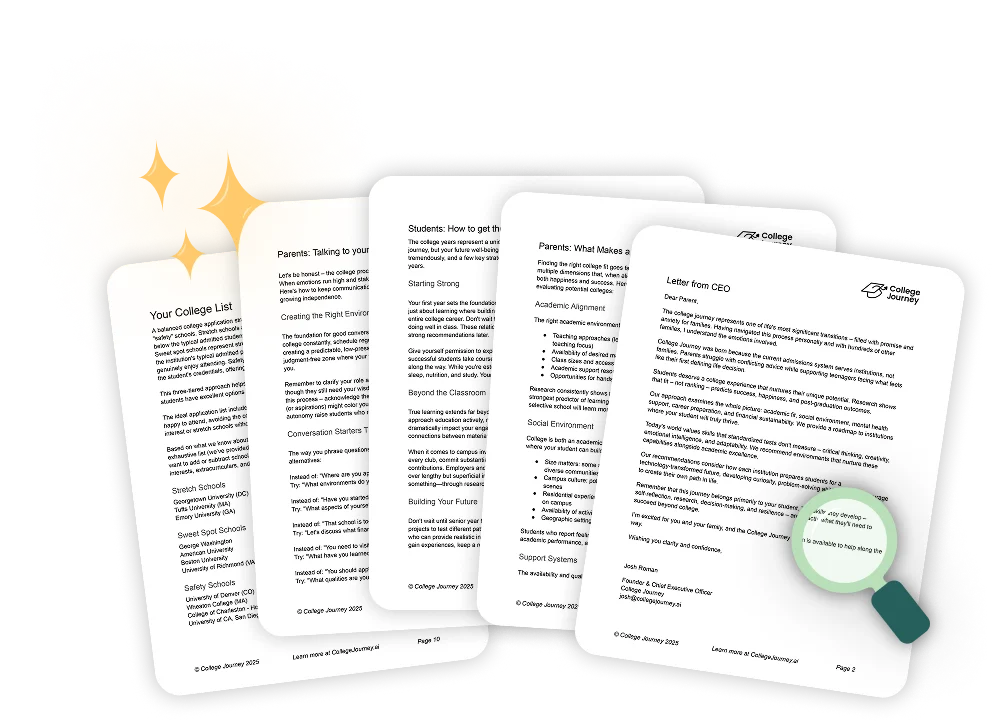Thinking about college but not sure how much it will cost? You’re not alone. College prices vary, and understanding tuition, fees, and other expenses is essential for planning.
Public and private colleges have different price tags. In-state and out-of-state tuition can also make a big difference. This guide will help you understand the average cost of college tuition, what impacts pricing, and how you can manage expenses with financial aid and scholarships.
Key Takeaways
- College costs include tuition, housing, food, books, and personal expenses.
- Public colleges are cheaper for in-state students, while out-of-state tuition is higher.
- Private colleges cost more but often provide strong financial aid.
- Community colleges offer a low-cost option before transferring to a university.
- Additional costs like books, lab fees, and transportation should be considered.
What Contributes to the Total Cost of College?
The cost of college is more than just tuition. Many other expenses add up, making it important to understand where your money goes.
- Tuition and Fees
Tuition is the largest part of college costs. However, the amount you pay depends on the type of school and your residency status.
If you attend a public university, you’ll pay much less as an in-state student. The average in-state tuition at public 4-year colleges is around $9,750 annually. But if you’re an out-of-state student, tuition can be nearly three times higher, averaging around $28,386 per year.
Private colleges charge the same tuition for all students, regardless of where they live. But they are usually much more expensive and can feel unaffordable. The average tuition at private universities is over $38,421 per year.
Besides tuition, most colleges charge additional fees. These include technology fees, lab access, student activity costs, and athletic programs. Fees can add hundreds or even thousands of dollars per year to your bill.
- Room and Board
Where you live plays a big role in your total college costs.
If you live on campus, you’ll likely pay for room and board, including housing and meals. The room and board costs range from $10,000 to $14,000 per year. Some colleges require first-year students to live on campus, which means this cost is unavoidable.
Living off-campus might seem cheaper, but it depends on where you study. In some cities, rent and utilities can add up to more than $12,000 annually. You’ll also need to factor in groceries and transportation.
For students who live at home, housing costs are much lower. However, commuting expenses can still add up, especially if you drive long distances or use public transportation daily.
- Books and Supplies
Books and supplies are essential but often overlooked costs. The average student spends about $1,200 per year on textbooks and course materials. Some classes require expensive lab kits, software, or art supplies, pushing costs even higher.
New textbooks can be pricey, but there are ways to save. Many students rent books, buy used copies, or use free digital versions. Selling your books at the end of the semester can also help recover some of the cost.
- Transportation
How much you spend on transportation depends on where you live and how often you travel.
If you live on campus, your transportation costs will likely be low. But if you commute daily, you must budget for gas, parking permits, and public transportation as part of your overall cost of attendance. Parking fees alone can cost $500 or more per year at some colleges.
Travel costs can be much higher if you attend college out of state. Plane tickets, train rides, and long-distance bus fares can quickly add up, especially during holiday breaks. Planning your travel and looking for student discounts can help cut costs.
- Personal Expenses
College life comes with extra costs beyond tuition, books, and housing. You’ll need to budget for laundry, personal care, clothing, and entertainment.
While these costs may seem small, they add up. On average, students spend over $2,000 per year on personal expenses. Being mindful of your spending and taking advantage of student discounts can help keep these costs under control.
Average Cost of College Tuition: In-State vs. Out-of-State Costs
Where you live greatly affects how much you pay for college. Public colleges charge lower tuition for in-state students but much higher rates for those from other states.
In-State Tuition
Attending a public university in your home state means you qualify for in-state tuition. This is usually the cheapest option because public colleges receive state funding to offer lower rates to residents.
The average in-state tuition at a public four-year college is about $9,750 per year, but this amount depends on the state.
For example:
- Florida and Wyoming have some of the lowest in-state tuition rates, around $3,877 annually.
- California’s public universities, such as those in the UC system, charge in-state students about $15,000 per year in tuition.
- Some highly ranked public schools, like the University of Virginia, have higher in-state tuition, closer to $23,000 per year.
Staying in-state can save you thousands of dollars. Many states also offer scholarships and grants that lower costs even more.
Out-of-State Tuition
If you attend a public university in another state, you will pay out-of-state tuition. This is much higher because out-of-state students do not contribute to the state’s education funding through taxes.
The average out-of-state tuition at a public 4-year college is about $27,000 annually. Some schools charge much more:
- University of Michigan: Out-of-state tuition is about $57,776 per year—more than twice the in-state cost.
- University of California, Berkeley: Out-of-state students pay nearly $50,000 per year.
- Penn State University: Out-of-state tuition is $41,790 per year, compared to $20,644 for in-state students.
Because of these high costs, many students look for ways to reduce out-of-state tuition or find schools with better aid to financially plan for their college.
Private vs. Public College Costs
Overwhelmed by college research?
Let us help save time and find the perfect schools for your family.
Both public and private colleges offer quality education, but their tuition structures and funding sources differ. Public colleges receive state funding, making them more affordable for in-state students. Private colleges, however, rely on tuition and private funding, often leading to higher costs but more financial aid opportunities.
Public Colleges
Public colleges are funded by state governments, which helps keep tuition low for in-state students. If you attend a public university in your home state, you pay in-state tuition much lower than out-of-state or private school tuition.
The average annual cost of an in-state tuition at public 4-year colleges is about $10,000. However, if you attend a public college in a different state, you’ll pay out-of-state tuition, which averages around $27,000 per year. This is almost three times the cost of in-state tuition.
Public colleges often have larger student populations, diverse degree programs, and lower costs, making them a practical choice for many students.
Private Colleges
Private colleges do not receive state funding, so they rely on tuition, donations, and endowments to cover their annual costs. As a result, they usually charge higher tuition than public schools. The average tuition at private colleges is $40,700 per year, and top schools like Harvard, Stanford, and Columbia charge over $60,000 per year.
Although private colleges cost more upfront, they also offer more financial aid. Many private schools provide generous scholarships and grants that significantly reduce tuition for qualifying full-time students. Some students end up paying less at a private college than they would at an out-of-state public university.
Private colleges also tend to have smaller classes, more personalized education, and stronger alum networks. Some students choose private schools for specialized programs or access to better funding opportunities.
Financial Aid and Scholarships
Paying for college can be stressful, but financial planning can help. Many students do not pay the full cost of tuition because they receive grants, scholarships, or work-study opportunities.
Types of Financial Aid
Financial aid comes in different forms, and knowing your options is key to lowering college expenses. The main types include:
| Type of Financial Aid | What It Is | Key Benefit |
| Grants | Free money based on financial need. | No repayment required |
| Scholarships | Awarded for academics, sports, or other achievements. | Reduces tuition costs; no repayment required. |
| Work-Study | Part-time campus jobs for students. | Earn money while studying; helps cover expenses. |
| Federal Loans | Government loans with fixed interest rates. | Lower interest rates; flexible repayment options. |
| Private Loans | Loans from banks or lenders. | Fills funding gaps but has higher interest rates. |
How to Apply for Financial Aid
You must complete the Free Application for Federal Student Aid (FAFSA) to qualify for financial aid. This form determines your eligibility for grants, loans, and work-study programs. Many colleges and states also use the FAFSA to decide on scholarships and additional aid.
FAFSA applications open on October 1st each year. Some states have limited grant funding, so applying early increases your chances of getting more aid. Some private colleges also require the CSS Profile, which helps them decide on additional financial support.
Finding and Applying for Scholarships
Scholarships are a great way to reduce college costs because they do not need to be repaid. They come from colleges, businesses, nonprofits, and private organizations. Some are merit-based, while others are need-based or awarded for specific skills, backgrounds, or career interests.
Many colleges automatically consider you for scholarships when you apply. Private scholarships can range from a few hundred dollars to full-tuition awards. Websites like Fastweb, Scholarships.com, and the College Board list thousands of scholarships you can apply for.
Breaking Down the Average Total Cost of College
College costs go beyond just tuition. You must also budget for housing, food, books, and transportation. These expenses add up fast, so understanding the full cost can help you plan better.
Cost of Attending a 2-Year College vs. a 4-Year College
The total cost of college depends on whether you choose a 2-year community college or a 4-year university.
Attending a community college is the most affordable option. The average tuition for in-state students at a public community college is about $3,860 per year. Many students reduce costs even further by living at home instead of paying for on-campus housing. After earning an associate degree, some students transfer to a 4-year university to complete their bachelor’s degree. This approach can save thousands of dollars in tuition.
Public 4-year colleges have higher costs but offer more academic programs and career opportunities. As discussed earlier, if you attend a public university in your state, tuition costs around $10,000 per year. However, if you enroll as an out-of-state student, tuition rises significantly to an average of $27,000 per year.
Private 4-year colleges are often the most expensive, significantly increasing the average cost of attendance. The average tuition and fees at a private university is about $40,700 per academic year. Some top private schools charge over $60,000 per year. Although these institutions tend to have higher tuition rates, they also offer more financial aid and scholarships, which can help lower costs for qualifying college students.
Factors Affecting the Annual Average Cost of a College Degree
The total cost of college varies based on several factors:
- Tuition and fees: This is the biggest expense. In-state tuition and fees is much lower than out-of-state tuition at public universities. Private colleges charge the highest tuition.
- Room and board: If you live on campus, expect to pay between $10,000 and $14,000 per year for housing and meal plans. Living off-campus may save you money, but rent and utilities can add up.
- Books and supplies: College textbooks are expensive. The average student spends around $1,200 yearly on books and study materials. Some courses may also require special software or lab fees.
- Transportation: If you commute, factor in gas, parking, or public transportation. Out-of-state students should also budget for flights or long-distance travel, especially during holidays.
- Personal expenses: Daily costs like food, entertainment, and personal care can add up to $2,000 or more per year. Planning a budget for these expenses is important.
How to Estimate Your Expenses?
Planning for college requires understanding how much you’ll need to spend each year. Instead of guessing, you can break down your expected expenses and create a realistic budget. This will help you avoid financial stress, explore financial aid options, and make smart spending choices.
How to Calculate Your Total College Costs
To estimate your living expenses, start by checking the official cost breakdown from your college. Most schools list tuition, housing, meal plans, and fees on their website. However, your actual expenses include personal spending, transportation, and supplies.
Here’s how to calculate your costs:
- Start with fixed costs: The college sets annual tuition and fees, so these are easy to find. Check if your school has in-state vs. out-of-state tuition rates or additional fees for specific programs.
- Factor in housing and meals: Students living on campus can use the school’s published room and board rates. On the other hand, students living off campus will have to estimate rent, utilities, and groceries based on the area’s cost of living.
- Include academic expenses: Budget for books, supplies, and software. The average student spends about $1,200 per year on textbooks. Some courses may require extra fees for labs, equipment, or online resources.
- Account for transportation: If you commute, calculate gas, parking fees, and public transportation costs. If you live out of state, include travel expenses for holiday breaks.
- Estimate personal spending: Everyday expenses like food, entertainment, and personal care can total $2,000 or more per year. This amount varies based on lifestyle choices.
Use Online Tools for Better Estimates
Use net price calculators available on college websites to get an accurate idea of your total cost. These tools help you see your actual costs after financial aid, scholarships, and grants. The U.S. Department of Education’s College Scorecard is another great resource for comparing college expenses.
Adjust Your Budget to Save Money
Once you estimate your costs, you should look for ways to save:
- Live at home if possible to cut housing costs.
- Buy used or digital textbooks instead of new ones.
- Use student discounts for transportation, food, and entertainment.
- Cook meals instead of relying on expensive meal plans or eating out to help manage your annual cost.
Conclusion
Understanding the total cost of college is essential for making smart financial decisions. Tuition is only one part of the equation. Expenses like housing, books, transportation, and personal costs can add up quickly. Whether you choose a public or private college, in-state or out-of-state school, or a 2-year or 4-year program, knowing the costs beforehand helps you plan better.
About College Journey
Figuring out how much college costs is just one part of the journey. Planning for yearly tuition, financial aid, and scholarships can feel overwhelming, but College Journey is here to help. With Alice, your AI-powered college counselor, you get clear guidance on financial planning, average college costs, and how to make smart decisions about your education.
Alice helps you compare schools, estimate expenses, and understand how grants, scholarships, and student loans impact your budget. Whether you need tips on finding affordable colleges, maximizing financial aid, or budgeting for expenses, Alice has the answers.
With personalized recommendations, cost comparisons, and tools to track your financial progress, College Journey takes the stress out of planning for college. And the best part? It’s completely free to sign up!
FAQ
How can I reduce my college costs?
You can lower costs by applying for scholarships and grants, choosing an in-state public college, living at home, buying used or digital textbooks, and using student discounts for expenses like transportation and food.
Are online colleges cheaper than traditional colleges?
Online colleges often have lower tuition and fewer fees. You also save on housing and commuting costs. However, costs vary by school and program.
What are the hidden costs in college that students often forget?
Students often overlook lab fees, health insurance, technology costs, meal plans, and personal expenses like laundry, supplies, and entertainment.
Can I negotiate my college tuition?
Some colleges allow financial aid appeals if your financial situation changes. You can also ask for more scholarship money or compare offers from different schools to negotiate better aid and lower your average cost of tuition and fees.
Is it cheaper to study abroad than in the U.S.?
In some cases, yes. Many countries offer low-cost or free tuition for international students. Some U.S. students find studying abroad cheaper, especially in countries with government-funded education.




